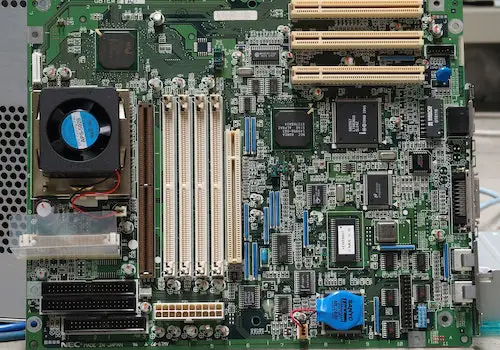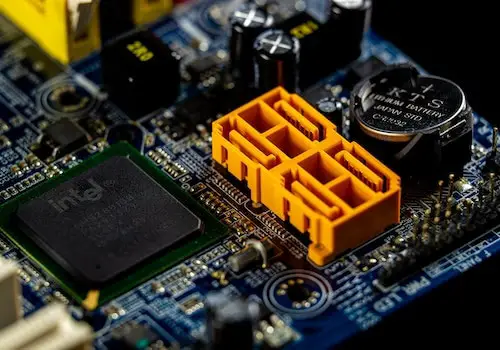
In short, yes. However, not all of them do. Most modern motherboards will come with WiFi and Bluetooth. Older motherboards do not support WiFi and Bluetooth.
Unless you are a PC builder, you may not know whether your motherboard has WiFi. I had to show some of my family members how to look for WiFi on their desktops.
In this guide, we will answer all your questions related to motherboards.
Contents
Not all desktop motherboards come with WiFi, so if you're purchasing a new motherboard, check the specifications. Typically, when buying a low-cost or mid-range motherboard, it does not come with a WiFi module, as most users prefer a stable and faster-wired connection like an Ethernet cable.
Laptop motherboards always include a built-in WiFi card because they need to be portable. Occasionally, your WiFi card may break on your laptop, but it would have included a WiFi card.

If your motherboard has WiFi, you will need the installed module/adapter and the drivers for the built-in in WiFi to function. So, you can check the desktop computer for built-in WiFi in the Network Adapters section.
You can start by opening your PC case and checking the Input/Output panel. If there are antenna connectors, your motherboard will have built-in WiFi. However, there are rare instances where your motherboard has WiFi but no connectors, which generally means you will run into connectivity issues.
When shopping for desktops or desktop motherboards, it is best to read through the specs on the retailer's website or request the spec sheet directly from the manufacturer before making any purchases.
If you have already made your purchase, you can search for the spec sheet in product reviews. You can also Google the motherboard's model name. All motherboards that have "AC" in their model name will have WiFi on the motherboard.
Most older motherboards do not have built-in WiFi or Bluetooth. While most modern motherboards include it, not all come with WiFi.
You may need to purchase an expansion card. An expansion card is a plug-in board that uses slots to connect to the motherboard. For example, a WiFi adapter is an expansion card that will add WiFi to your desktop computer.
Unfortunately, not all motherboards come with a Bluetooth chip. In this case, you would need to get a Bluetooth dongle.
In general, premium motherboards with Bluetooth connectivity also have internet connections and wireless network access points.
Three options will enable your motherboards to come with WiFi. However, there are considerable price differences between motherboards that have WiFi and those that do not. Therefore, it might be cheaper to consider purchasing additional components if you require WiFi.

You can plug the WiFi adapter into a USB port on the PC.
A motherboard with built-in WiFi will be more expensive than a motherboard without built-in WiFi. The cheapest option is to purchase the WiFi Adapter.
A motherboard has built-in WiFi can exclude a WiFi antenna. Instead, most motherboards with WiFi rely on a gateway router signal using a built-in WiFi chipset to connect with the desktops.
The majority of the WiFi adapters will need an antenna that is connected directly to the motherboard.
You should not attach an external antenna to a motherboard that comes with WiFi, as this will cause desktop computers to have a poor signal. Instead, get a video card that has WiFi.

A WiFi router has two brands that transmit data using radio waves known as frequency ranges. The two brands are 2.4 GHz and 5.0 GHz, and some motherboards will support the brand 5GHz, but most motherboards will only support the brand 2.4GHz.
The range of 2.4 GHz can penetrate through walls, so the coverage is better. However, the amount of information that can be transmitted is less.
The alternative range, 5.0 GHz, is considered to have better speeds, and more data can be transmitted because the range has more ups and downs. However, the issue with higher frequencies is that it doesn't travel as far. Because of the higher waves, it is difficult for the frequency to travel through walls, and it loses energy faster.
It is possible to get by without the benefits of Bluetooth connectivity. However, there will be accessories that work best with Bluetooth and make life more convenient, like with your mobile devices. If your desktop does not have Bluetooth connectivity, you can follow the steps below to give your PC Bluetooth connectivity:
You will also need to buy a Bluetooth adapter and plug it into your computer. If your Windows operating system has basic Bluetooth drivers, it will automatically install them. If not, you can install the drivers manually.
Once the installation of drivers is complete, you can pair a new device. Then, the device will be available for use.
You can then manage all your Bluetooth devices by using the Bluetooth menu.
The Motherboard Form Factor is a hardware design that sets out the fixed dimensions that a PC build or upgrade should know. Because they guarantee that the components will fit together, they can determine the size of the system.
Generally, built-in WiFi is more likely to be present on motherboard form factors.
These days, you will find Ethernet ports on almost every networking device because they create a stable Ethernet connection for multiple devices to connect using ethernet cables. This is called a LAN, MAN, or WAN, and it works for gaming on an X-box, modem, stationary PCs, and laptops.
WiFi technology advances have reduced the need for ethernet ports in most devices. However, the port still provides the fastest and most stable way to connect to the internet. However, most people may find hardwiring your ethernet ports directly using a cable to connect devices challenging.
We hope the points above helped answer all your questions about WiFi and Bluetooth on motherboards.
If you want to buy a new motherboard, we suggest looking at the specifications and your budget to choose a motherboard that best suits your needs. If you aren't looking for a change, select the best alternative option to add WiFi and Bluetooth to your personal desktop.
